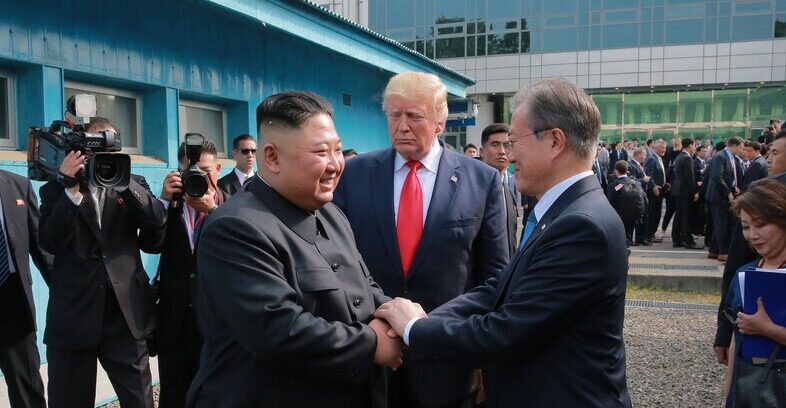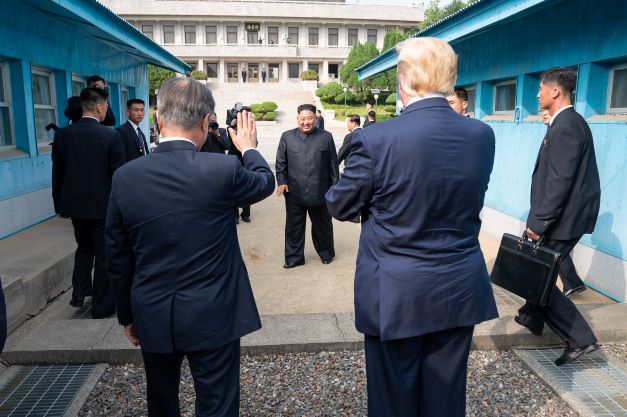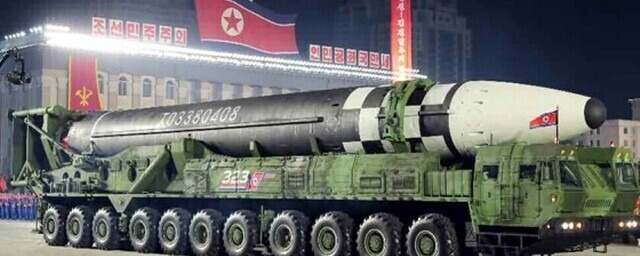Kim Jong-un’s Two Uses of “Idiot” in Final Letter to Trump
HANKYOREH
APLN member Cheong Wook-Sik writes on the final correspondence between the North Korean leader Kim Jong-un and then-President Donald Trump of the US. Read the original article here.
The final correspondence between the two leaders highlights Kim’s state of mind following the breakdown of the Hanoi summit, which in turn set the direction for the years to follow.
The last of the 27 letters released by the Korean-American Club, an association of current and former Korean foreign correspondents in the US, was sent by North Korean leader Kim Jong-un to then-President Donald Trump of the US on Aug. 5, 2019.
The word “idiot” appears twice in this letter. It can be found once in the line, “If you do not think of our relationship as a stepping stone that only benefits you, then you would not make me look like an idiot that will only give without getting anything in return.” The next time it crops up is in reference to the “idiots” in the South, who Kim writes of having surprised with their meeting, apparently finding some humor in that fact.
The reason why “idiot” stands out as a keyword is not only because it is highly unusual to see such an expression in the correspondence between heads of state, but also because it clearly expresses how Kim Jong-un was feeling at the time. The disappointment felt by Kim underpinned his determination to place nuclear weapons at the center of his national security strategy, self-reliance at the center of his economic strategy, and China and Russia at the center of his diplomatic strategy.
Promise unkept
Kim, who had spent more than 120 hours on a train between Pyongyang and Hanoi, was greatly shocked when the second North Korea-US summit, held in Hanoi at the end of February 2019, ended without a deal. As if he felt sorry for this outcome, Trump sent a letter on March 22 to comfort Kim.
Trump sent his greetings ahead of the “upcoming anniversary” of the birth of Kim Il-sung, calling Kim Jong-un’s grandfather the “founder of your great nation.” Trump wrote of the great hopes and expectations he had to achieve something with the younger Kim in the months and years to come, so long as the two held fast to their common goals.
Perhaps when he received the letter, Kim thought, “I am going to give this another go even though I hate him.” In a reply sent 80 days later, Kim wrote, “I also believe that the deep and special friendship between us will act as a magical force” that will bring about progress in North Korea-US relations, adding, “I believe the one day will come sooner or later when we sit down together to make great things happen.”
Two days later, Trump responded with “I completely agree.” However, a strange war of nerves was also taking place. While Kim preferred a summit, Trump suggested working-level talks, proposing that each side’s negotiating teams meet again within a few weeks. In fact, the Trump administration proposed working-level talks to North Korea several times, but the North remained silent.
Things began to change at the end of June. At the time, Trump was scheduled to visit Seoul following the G20 summit held in Osaka, Japan. However, on the morning of June 29, just before departing for Seoul, he tweeted, “While there, if Chairman Kim of North Korea sees this, I would meet him at the Border/DMZ just to shake his hand and say Hello(?)!”
Trump had been asking to hold working-level talks before a potential summit, and the US State Department had maintained that the two leaders had no plans to meet until just before they actually did. What was the reason behind Trump’s sudden proposal to meet at the DMZ? Trump had complained at the G20 summit that US media coverage of him was lacking as the American media was instead focused on the Democratic Party presidential debate on television.
Eventually, Trump’s surprise proposal paid off: US media headlines soon shifted their focus to his tweet.
Confused by whether Trump’s proposal was sincere or a joke, Kim requested formal diplomatic correspondence. Upon this request, Trump wrote him a personal letter that said, “I will be near the DMZ in the afternoon and propose a meeting at 3:30 [on June 30] at the Peace House on the southern side of the military demarcation line.”
Kim accepted the proposal, and President Moon Jae-in accompanied Trump to this spontaneous meeting. Initially, Trump had said that he was meeting Kim “with no specific agenda” and, “If [Kim is] there, we’ll see each other for two minutes, that’s all we can, but that will be fine.”
But the meeting between the two leaders carried on for 40 minutes, with Trump promising to cancel South Korea-US joint exercises scheduled for August. Kim reciprocated by saying that he would accept working-level talks with the US and proposed for such talks to take place in August.
However, an American announcement canceling the August joint exercises never came. Rather, according to then-US national security advisor John Bolton, Bolton had met with his South Korean counterpart, Chung Eui-yong, on July 24 and agreed to go through with the scheduled drills.
As this ensued, Kim offered some “advice” while at a short-range missile test. First, he criticized what he saw as “double-dealing behavior” by South Korea in terms of performing a “handshake of peace” in public while importing weapons and holding joint military exercises behind the scene. He then advised South Korea to “stop [its] reckless suicidal acts and come back to the proper [attitude] at an early date.”
However, the Moon administration paid more attention to the missile launch than to Kim’s “advice.” Calling it a “provocation” and “threat,” then Minister of National Defense Jeong Kyeong-doo said that the South would consider the Kim regime and the North Korean military as “enemies” if Pyongyang continued its provocations. The Ministry of National Defense also announced in early August that it would conduct joint exercises later that month.
Following this, Kim penned a long letter to Trump on Aug. 5, in which he wrote, “My belief was that the provocative combined military exercises would either be cancelled or postponed ahead of our two countries’ working-level negotiations where we would continue to discuss important matters.”
“Against whom is the combined military exercises taking place in the southern part of the Korean Peninsula, who are they trying to block, and who are they intended to defeat and attack?” Kim wrote.
The description of the Moon administration as “idiotic” came in this context. Kim also expressed that he had no intention of holding working-level talks under such circumstances.
No deal
While Kim was nursing feelings of disappointment and betrayal toward South Korea and the US, Trump was boasting. In one letter, Kim asked, “What has Your Excellency done, and what am I to explain to my people about what has changed since we met?”
This was the context behind his sentence about not being treated like an “idiot,” with its overtones of shame. But in contrast with the apparent nervousness of his previous correspondence, Kim stressed, “But we are in a different situation, and we are not in a hurry.”
Indeed, working-level talks held in Stockholm on Oct. 5 of that year ended without a deal. The crucial factor was the matter of sanctions. Prior to the meeting, Trump stressed that the sanctions needed to be kept in place, and the US negotiation team insisted that sanctions should be an exception to the “simultaneously and in parallel” approach.
In response, Pyongyang declared that a deal was off the table, citing its “survival and development rights” and the fact that there had been no change in Washington’s stance on the sanctions issue. Kim’s sense of foreboding proved to be on target.
Image: North Korean leader Kim Jong-un (left) greets South Korean President Moon Jae-in during their meeting in Panmunjom in 2019. Donald Trump of the US stands behind the leaders of the two Koreas. (KCNA)




